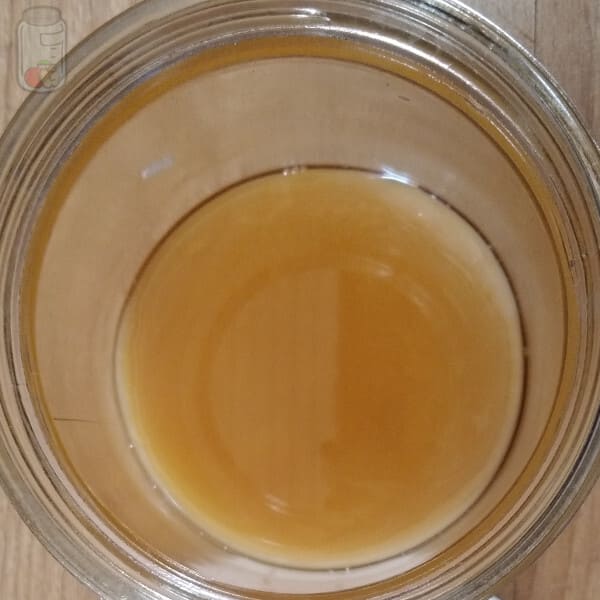The use of aromatic herbs such as thyme gives each food dish a distinctive flavor, so they should not be missing in the kitchen. However, if you don’t preserve it well, they will lose their characteristic aroma, so it is essential to know how to store thyme.
You can keep thyme cool at room temperature for 1 to 2 days. Then, you can keep thyme in the fridge for up to 2 weeks. In addition, thyme supports freezing for eight months. Finally, you have the chance to keep thyme dried or pickled for more than 12 months.

To learn more about these methods to preserve thyme, please continue reading.
Store thyme in the fridge
If you have a lot of thyme and you will not use everything at the moment, it would be best if you keep it in the refrigerator, where it will last a week on average.
The steps to keep thyme in the refrigerator are as follows:
- Step 1: Choose thyme
The first thing is to select the thyme in better condition, avoiding stiff stems.
- Step 2: Remove the stems
I recommend you remove the stems and use just the leaves to optimize the space where you will store them. However, this step is up to you since you can keep the thyme with the stems in the fridge.
- Step 3: Washing
In this step, you must remove all traces of dirt; therefore, use plenty of water.
- Step 4: Remove the water excess
It is necessary to remove all traces of water using absorbent towels to prevent mold development due to moisture once it is cooled.
- Step 5: Transfer to containers
Put the thyme inside an airtight container.
- Step 6: Refrigerate thyme
Finally, please take it to the fridge, and place the bag in an area where it receives cold enough but is away from the freezer.
Keeping thyme in the fridge allows this herb to maintain its freshness for 10 to 14 days.
Keep frozen thyme
Can thyme be frozen? The evidence suggests that it is possible to freeze thyme without a significant deterioration in the quality of the product, so it is a good strategy for the medium and long term in terms of storage.
When you have too much thyme at home and keeping them dry does not seem the best alternative, freezing it is an effective way to maintain its freshness.
There are two methods to freeze thyme, each of which will be described step by step.
Freeze thyme in bags
This is one of the fastest ways to freeze thyme and is simple to achieve.
You must follow these steps:
- Step 1: Choose and wash the thyme
You should choose the best thyme stalks with enough leaves and then wash with plenty of water.
- Step 2: Dry
Before freezing the thyme, it is necessary to ensure that it is not wet. To do this, you need to use paper towels.
- Step 3: Separate the leaves
OPTIONALLY, you can remove the thyme leaves from the stems.
- Step 4: Bagging
In a freezer bag should be placed the desired amount of thyme.
Before closing the bag, you have to remove as much air as possible.
- Step 5: Labelling
It is necessary to indicate the date when you froze the thyme since it is long-term storage.
- Step 6: Take it to the freezer
Finally, take the bag to the freezer. Keeping frozen thyme with this method ensures four months of shelf life.
It would be best to use frozen thyme as soon as it thaws, or it will lose its properties and even freshness.
Freeze thyme in oil or water
Freezing thyme in oil is considered the most effective to maintain its smell, taste, and freshness for longer. The step by step is as follows:
- Step 1: Get the materials
To freeze thyme this way, you will need extra virgin olive oil, plastic film, and a mold to make ice cubes (bucket).
- Step 2: Washing and drying
Once the thyme leaves are selected, you should wash them and remove the excess water after.
- Step 3: Remove the leaves from the stems
Label the thyme leaves from the stems.
- Step 4: Prepare the bucket
In each of the spaces of the bucket is placed enough thyme leaves, almost to the edge of it.
- Step 5: Add the oil
You should gradually add extra virgin olive oil until you cover the thyme with it.
- Step 6: Pre freeze thyme
Take the mold to the freezer for 4 hours or until the cubes have a stiff consistency.
- Step 7: Cover
Here you have two options. The first one is to transfer all the cubes into an airtight container or a ziplock bag.
The second option is to cover or wrap the ice tray with plastic film.
In my opinion, the first option is more secure but also seems to be more effective regarding thyme’s shelf life.
- Step 8: Write the storage date
As I always recommend, label the container you will use with the current storage date.
- Step 9: Store in the freezer
Now you are ready to store the thyme in the freezer, which should last at least six months.
You just have to take out a cube and add it to the dishes you prepare every time you want to use thyme.
How to dehydrate thyme
I would say dehydration is the most used method for thyme storage, preserving its flavor and aromatic smell in the long run without requiring a fridge. In addition, you can use it as a powder.
There is more than one way to dehydrate thyme, and I will cover them in the following chapters.
Dehydrate thyme in the oven
When you dry the thyme in the oven, you reduce the chances of contamination, but it is more expensive than the natural drying process (following method I will explain).
- Step 1: Preheat the oven
The first step in drying thyme is to preheat the oven to about 170-180°F (80°C).
- Step 2: Prepare the thyme
Put parchment paper on the oven tray, and then spread the thyme on it, ensuring you don’t pile it up, so it will dry better.
- Step 3: Baking
Take the tray, place it into the oven, and let the thyme dry. This process usually takes 2 to 4 hours, depending on the amount of thyme.
- Step 4: Remove from the oven
When you feel the thyme is thoroughly dried, remove it from the oven and let it cool at room temperature because the steam can develop moisture on the containers.
- Step 5: Transfer it to safe containers
It should only be packed tightly, whether in bags or small bottles, and kept in the cupboard. Dried thyme will last a year and does NOT need to be refrigerated.
Since it is also a form of long-term storage, you can label the container with the current date.
If you have a dehydrator, you can also use it, in which case the drying process of the thyme will be faster.
Hanging and drying of thyme
For those who do not have an oven or dehydrator at home, it is also possible to dry the thyme by hanging it. The method is quite simple; just follow these steps:
- Step 1: Washing
You should choose and wash the thyme branches that you will dry to prevent them from having dust, insects, or any other type of dirt.
- Step 2: Remove excess water
You should remove excess water from the thyme with paper towels before hanging.
- Step 3: Form bunches
Form bunches with six thyme stems for more effective drying, tying them with a string.
- Step 4: Hang the thyme
Choose an area with no moisture, light, or excessive heat, and then hang the thyme.
The bouquets should be hung upside down for approximately four weeks and monitored every week.
- Step 5: Packaging
When the thyme is completely dry, you should remove the stems. The most common containers are ziplock bags or glass jars; you just need to make sure you remove as much air as possible, which is easier to do with bags.
- Step 6: Store it in the pantry
Place the thyme in the cupboard or the pantry (room temperature). If you used this method to store thyme, it should last between 10-12 months.
Keep thyme in salt
If you preserve the thyme in salt, you will have a combo while preparing your recipes because you will add salt and thyme simultaneously.
The instructions to keep the thyme in salt are the followings:
- Step 1: Get the materials
This time, you need coarse salt and the containers, usually glass ones. It is pretty obvious to mention, but you need the thyme too.
- Step 2: Washing and drying thyme
You should wash the thyme with plenty of water and then dry it as much as possible. The glass jar should also be completely dry.
- Step 3: Chop the thyme
If you are going to store thyme with its stems, you must chop them to optimize the space for your containers.
- Step 4: Filling the containers
Add a layer of salt to the glass jar and then a layer of thyme. After that, repeat the process until you fill the container or there is no thyme remaining.
Note: The last layer should be of salt since the thyme must be entirely covered by it.
- Step 5: Place it in the cupboard
After you have completed all the steps, close the lid tightly, and you are ready to store the thyme in salt in the cupboard with an estimated shelf life of eight months.
You can remove the salt layer or use some of it along with the thyme.
Preserving thyme in salt is another form of long-term storage, but in my opinion, dehydrating is a superior form of storage. However, if you want to explore new things, this recipe is for you.
Preserve thyme in vinegar
Many aromatic herbs such as thyme are preserved by preparing vinaigrettes or flavored oils, which is good when making salads.
The step by step is quite simple, so here we go:
- Step 1: Washing and chopping
Clean the thyme and chop the stems since you will immerse them in vinegar.
- Step 2: Place them in a jar
You can transfer the thyme to the container when you have it in pieces. Usually, you will need a mason jar; however, any glass jar is perfect. The amount of thyme determines the size of the container.
- Step 3: Add the oil
Cover the thyme with vinegar, the more neutral its flavor, the better. Ideally, one-half of the jar is full of thyme, and the rest is vinegar.
- Step 4: Let it macerate
Finally, place the contaienr in the cupboard or anywhere else that is cool and dry. You should store it for about two weeks before use.
Afterward, you can store thyme in vinegar for six months in the fridge. [1]
How to know if thyme is bad?
When the fresh thyme is damaged, its leaves are wilted or have lost color and smell. However, dried thyme can lose its fragrance after a few months, even with good storage, so the idea is to replace it.
How long does thyme last?
Aromatic herbs have a long shelf life, but they can lose some typical characteristics, such as smell and taste, and to prevent that, we use the present storage guidelines. Therefore, the durability of thyme will depend on the preservation process used.
The following table shows the approximate duration of thyme according to the method of preservation:
| Product | Duration |
| Fresh thyme | 1 to 2 days |
| Fresh thyme in the fridge | 10 to 14 days |
| Frozen thyme | 4 to 6 months |
| Dried thyme | 1 year or more |
| Thyme in salt | 8 months |
| Thyme in vinegar | 6 months |
What is the best method of conservation of thyme?
That depends on the intention, if you want to store the thyme fresh in the short term or if you’re going to keep it for the long run.
The fridge offers the best solution in the short term since it is pretty simple and maintains its freshness as if you just took it from the plant.
On the other side, the most common form of storage in the long term is dehydration, since even after several months, you can still feel the aroma and taste of thyme.
Finally, if you don’t like the consistency of the dried thyme, you can still freeze it with perfect results.
I hope you enjoyed this journey reading this content, so I invite you to read more and more about food preservation here on this website.
[1] https://nchfp.uga.edu/publications/uga/uga_flavored_vinegars.pdf






